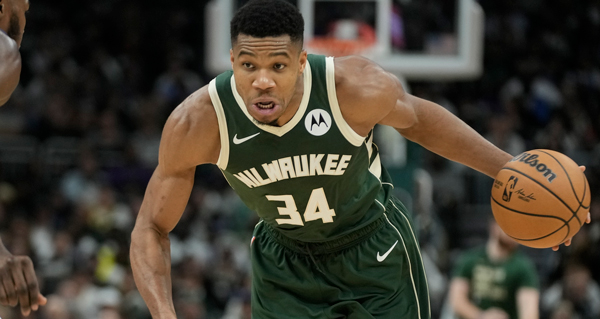In the heart of the midwest, there are two very different NBA teams. One has much more expensive tickets than the other, even though they are much worse and possess much less star power. The less costly team to see, here, is the Milwaukee Bucks, who have two of their sport’s biggest celebrities in Giannis Antetokounmpo and Damian Lillard. Roughly just 90 miles south are the Chicago Bulls, who are nine games behind Milwaukee in the standings and haven’t won a playoff series since 2015.
As a Chicagoan who loves basketball and lives near the highway that takes me quickly to Wisconsin, the dichotomy of the two teams is important to me in the way it is to many of my city’s hoop-heads. Travel for less than two hours and spend about half as much money, and you can see some of the best basketball in the world, in a much newer and nicer arena. It’s a market inefficiency that could end if the Bucks make it deep into the playoffs persistently enough to change their fanbase’s culture—but for now, they play in football country; in a land where the Green Bay Packers are God and everything else is just competing for disciple status.
The Fiserv Forum, where the Bucks play, is the house that Giannis built. Without his ascendance, there is no way to manufacture the consent needed for a building that cost half a billion dollars to erect, surrounded by a brand new business district. It is strange to stand in this shiny, generous space, just six years old, and know that if not for one unusually large and well-coordinated man, it could not exist. But that is how it is. And the same was true, 30 years ago in Chicago, when Michael Jordan’s unparalleled global fame provided the logic that led to the United Center, still the league’s largest arena.
It is now, however, also one the NBA’s oldest buildings, with only three being built before it. This is not to suggest that every team needs a new arena all the time—far from it, actually; as long as they hold basketball-loving butts, that’s all that really matters. Visiting both venues, though, gives one a sense of two totally different regimes of the NBA, urban development, and culture at large. The United Center is a museum-like space, legendary for past happenings and shaped in the maximalist, concrete-forward attitudes of its time. It is surrounded by a quiet valley of parking lots and half-used old manufacturing buildings; not bustling, smiling places to get a fairly priced Brandy Old Fashioned.
Much as the Bucks want their own edifice to carry history, too, efforts at such feel forced. These include the building’s glassy, dizzyingly large lobby hosting a gigantic Kareem Abdul-Jabbar bobblehead statue. Abdul-Jabbar was a Buck before a majority of their fans were born, and his place in mainstream NBA consciousness lies almost exclusively with the Los Angeles Lakers, who he was traded to in 1975. His time with the Bucks matters, of course. They won a championship in 1971, the franchise’s only one until Giannis and co. grabbed the 2021 trophy. But Bulls fans don’t need to be told who their team’s main guys are, and neither does anyone else.
They also seem more miserable with the weight of history than grateful for it, though—they might gladly trade all their stories for a dearth of them, and some exuberant new MVP candidates to root for instead. This was most obvious in January, when the Bulls’ organizational attempt at celebrating their heyday went awry. A dismal reunion charade for their six-time championship crew from the 1990’s led to a lot of no-shows, and an angry arena of rancid haters booing a former general manager’s widow, a little old woman who wept beneath the mid-court spotlight. Nasty stuff!
History, in sports, is heavy. Even the Lakers, who have arguably the greatest player ever on their team and won a title as recently as 2020, have ample grief in their fanbase because of things that happened before, even though they were good things. Generational discord over which players to worship most, and how, reaches animosity levels potent enough for people to ruin Christmas over their disagreements about how exactly to be holy.
For Bucks fans, much unlike what Bulls and Lakers supporters experience, ahistorical ignorance is a kind of bliss. Visit the Fiserv, and yes, there is a strain of fans sporting signifiers (many of which are for sale at the stadium) like purple and crimson Ray Allen and Michael Redd jerseys, or the old cutely cartoon logo of more stakes-free days. But mostly you will be surrounded by the wide-eyed, both new to what they’re seeing and treated to one of the best possible versions of it. They don’t know it now, but they are spoiled fans. A decade or two down the line, they may regret ever having had it so good, as they perceive the gap between old greatness and contemporary mediocrity. Then, their bitterness will teach them the code internalized by the more beaten-down fans of everywhere else, and they will be able to nod at them in a knowing way.



